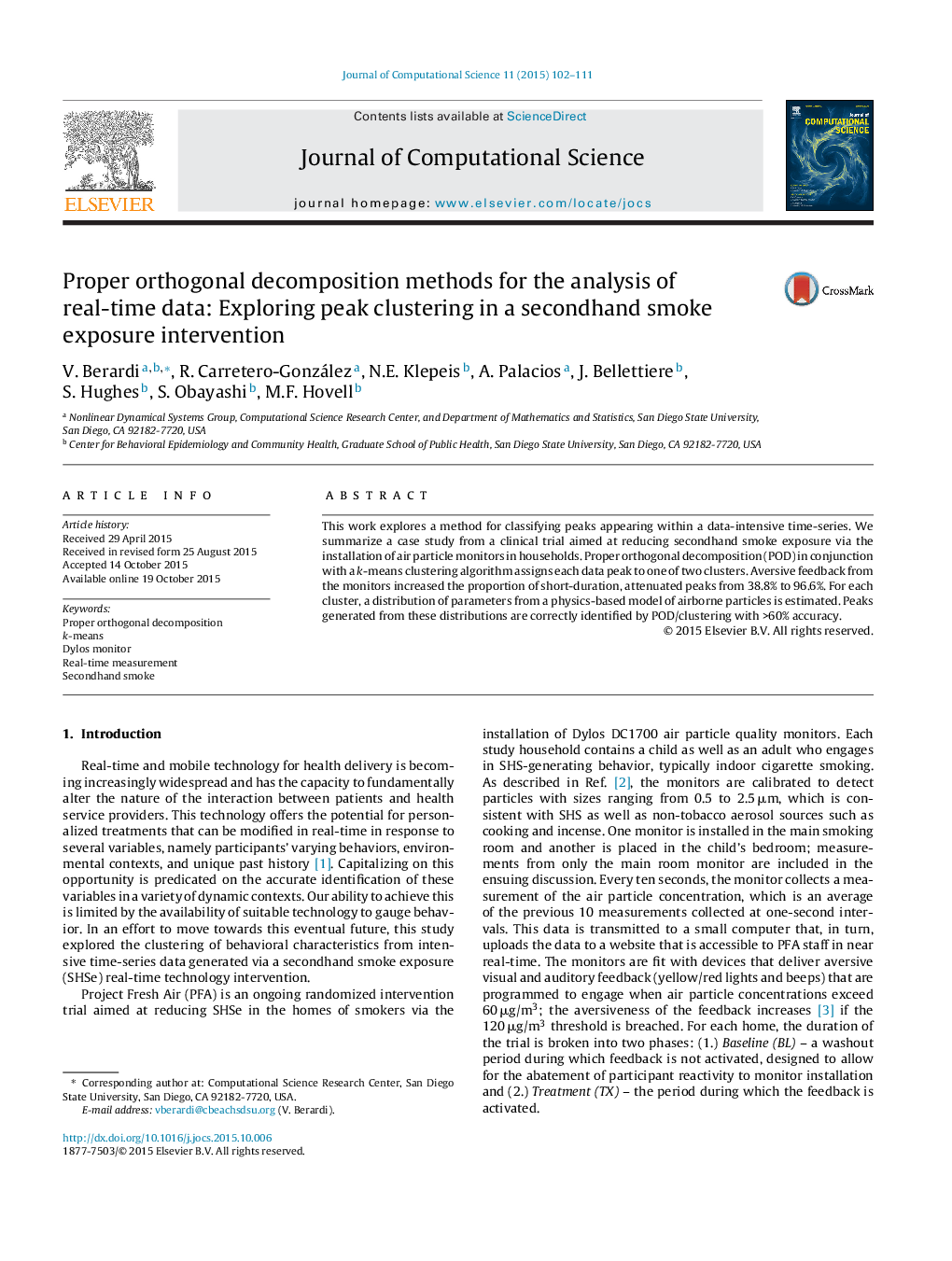| Article ID | Journal | Published Year | Pages | File Type |
|---|---|---|---|---|
| 6874563 | Journal of Computational Science | 2015 | 10 Pages |
Abstract
This work explores a method for classifying peaks appearing within a data-intensive time-series. We summarize a case study from a clinical trial aimed at reducing secondhand smoke exposure via the installation of air particle monitors in households. Proper orthogonal decomposition (POD) in conjunction with a k-means clustering algorithm assigns each data peak to one of two clusters. Aversive feedback from the monitors increased the proportion of short-duration, attenuated peaks from 38.8% to 96.6%. For each cluster, a distribution of parameters from a physics-based model of airborne particles is estimated. Peaks generated from these distributions are correctly identified by POD/clustering with >60% accuracy.
Related Topics
Physical Sciences and Engineering
Computer Science
Computational Theory and Mathematics
Authors
V. Berardi, R. Carretero-González, N.E. Klepeis, A. Palacios, J. Bellettiere, S. Hughes, S. Obayashi, M.F. Hovell,
